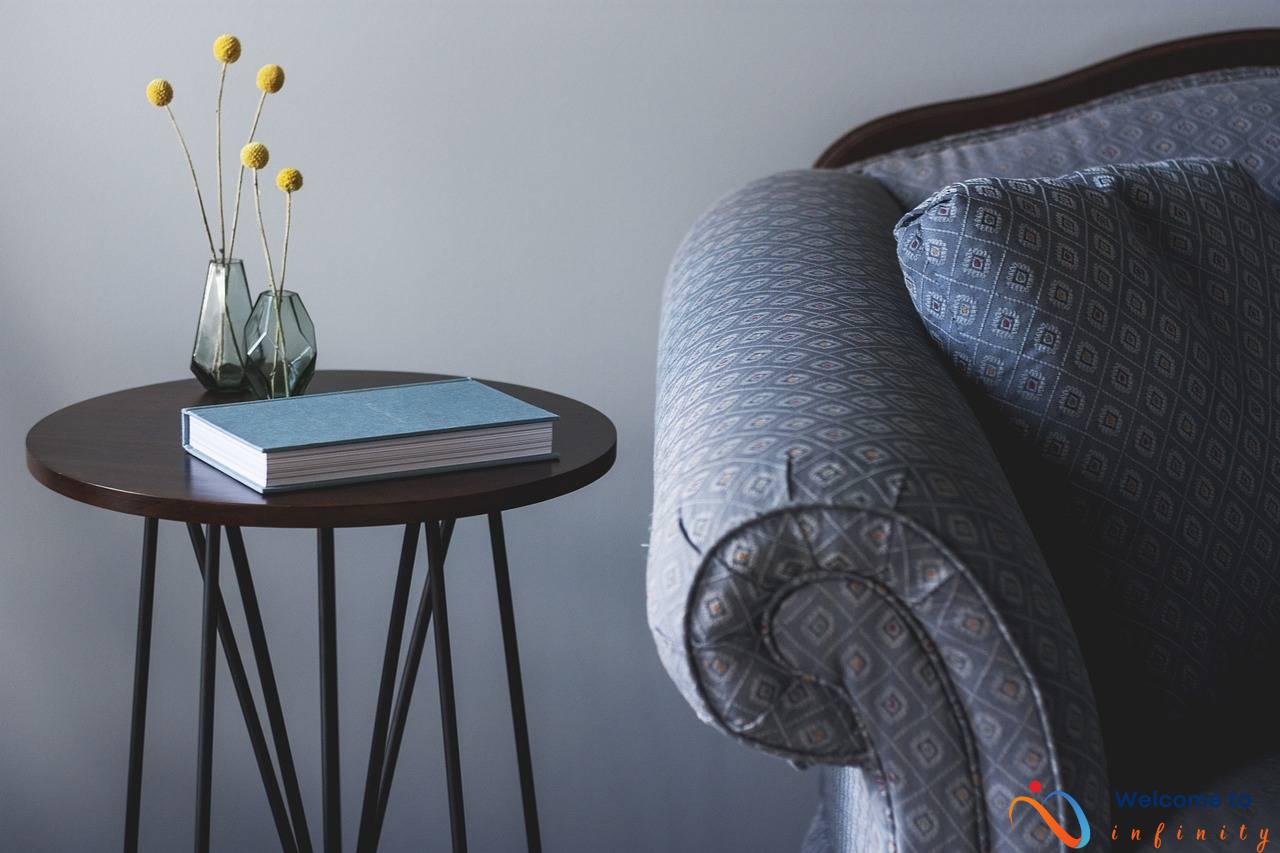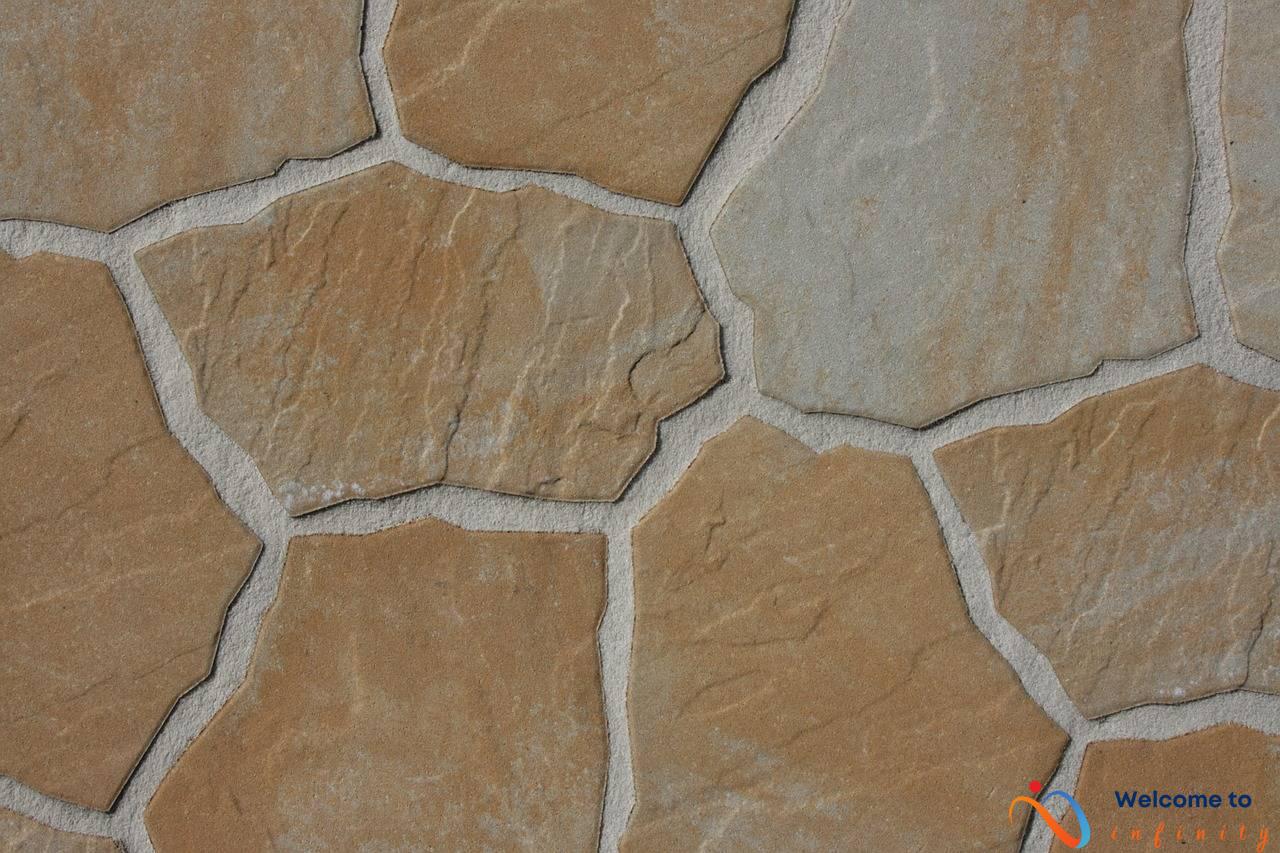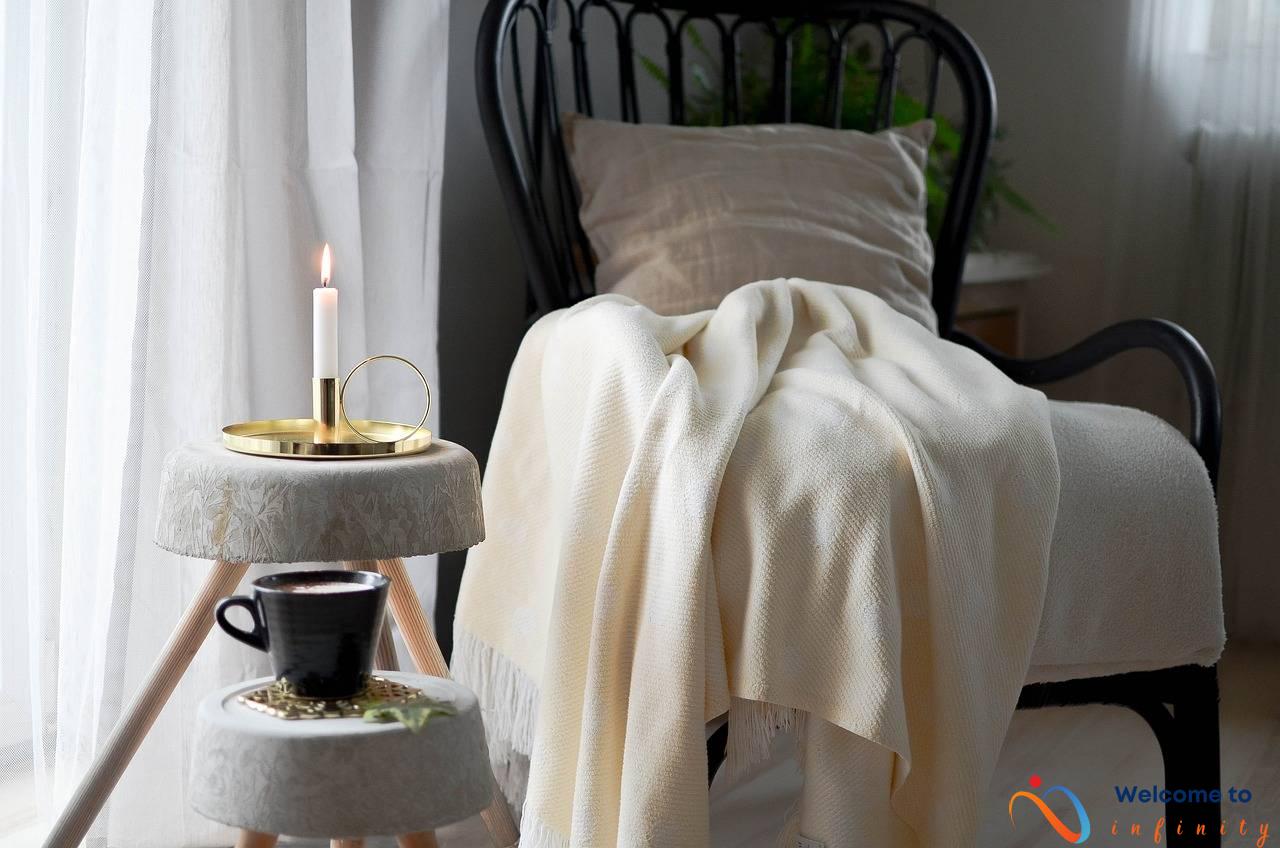Are you looking to create a workspace that boosts your creativity and productivity? Look no further than Asian-inspired design elements. Whether you're a freelancer, business owner, or employee, incorporating elements of Asian design can help you achieve a balanced, harmonious, and focused work environment.
By combining minimalist aesthetics, Feng Shui principles, and nature-inspired elements, you can create a workspace that promotes mental clarity, improves your mood, and enhances your creative thinking.
Embracing simplicity through minimalist design can help declutter your mind and empower you to focus on what's important. Japanese minimalism, for example, emphasizes the importance of empty space, or ma, and embracing a mindful, peaceful, and focused approach to work.
Similarly, Chinese minimalism highlights the balance of yin and yang, or opposing forces, in creating a harmonious environment that cultivates creativity.
Feng Shui, the ancient Chinese art of placement, can also be used to create a balanced and productive work environment. By incorporating the five elements of Feng Shui – wood, fire, earth, metal, and water – into your workspace, you can create a harmonious and balanced environment that supports your goals.
Placing the Bagua map, which represents different areas of your life, in your workspace can also help guide the design of your workspace and create a harmonious flow of energy.
Introducing natural elements into your workspace, such as plants, can also help boost your creativity and productivity. Bonsai trees, for example, are a miniature version of nature that can help reduce stress and enhance focus.
Komorebi, the Japanese word for the interplay of sunlight and leaves, can also be used to create a sense of calm and harmony in the workspace.
Incorporating these elements of nature into your workspace can help reduce stress, elevate your mood, and improve your overall wellbeing.
So why not give Asian-inspired design a try? Whether you're looking for a peaceful, minimalist, or nature-inspired workspace, there's something for everyone. With these simple tips, you can create a workspace that unlocks your creativity, enhances your productivity, and promotes your wellbeing.
Minimalism
Are you tired of cluttered workspaces that distract you from completing your tasks? Do you find yourself constantly searching for lost documents, distracted by non-essential items in your workspace? It's time to consider incorporating minimalist design elements into your workspace to boost productivity and focus.
Minimalist design emphasizes simplicity, with a focus on functionality and clean lines. By decluttering your workspace, you declutter your mind and create a more peaceful environment conducive to productivity. Minimalism can also help reduce stress and anxiety, leaving you with a clear mind to focus on your work.
- Remove non-essential items from your workspace, such as decorative objects or excess paper files.
- Invest in high-quality, functional furniture that serves multiple purposes.
- Opt for a neutral color palette that is calming and not distracting.
- Focus on the essentials and eliminate excess clutter to create an environment that fosters creativity and productivity.
Japanese minimalism, for example, emphasizes simplicity and the use of natural materials such as wood and stone. The absence of clutter in the environment allows for a clear mind and promotes a more mindful and focused work environment. Chinese minimalism, on the other hand, focuses on harmony and balance through the use of yin and yang elements. The incorporation of minimalist elements into your workspace can enhance balance, harmony, and flow.
Simplicity is the ultimate form of sophistication. By embracing minimalist design, you create a workspace that is both functional and aesthetically pleasing. Minimalism helps you prioritize essential tasks, declutter your mind, and increase productivity, allowing you to achieve your goals more efficiently.
Japanese Minimalism
Japanese minimalism is a design concept that emphasizes simplicity, naturalness, and balance. It aims to create a harmonious and peaceful environment by removing unnecessary elements, reducing clutter, and focusing on functionalism.
Japanese minimalism promotes a peaceful, mindful, and focused work environment by minimizing distractions and creating a streamlined workspace. In a minimalist office, you can easily find everything you need, and there is nothing to distract you from your work. You can concentrate on your tasks without feeling overwhelmed or stressed.
Japanese minimalism also emphasizes the use of natural materials such as wood, stone, and paper, which can create a calming and relaxing atmosphere. This design concept encourages the use of neutral colors such as white, beige, and gray, which can help reduce visual noise and enhance a sense of tranquility.
One of the main principles of Japanese minimalism is “ma,” which refers to the concept of empty space. In Japanese design, empty space is considered just as important as the objects in the space. By embracing this principle, you can create a sense of openness and spaciousness in your workspace, which can promote creativity and focus.
To incorporate Japanese minimalism in your workspace, you can declutter your desk, remove unnecessary items, and focus on functionality. You can also incorporate natural materials, neutral colors, and empty space, creating a peaceful and focused work environment.
Chinese Minimalism
Chinese minimalism is more than just sleek lines and empty spaces. It is a philosophy that emphasizes the importance of balance and harmony, both in design and in life. according to Chinese tradition, all things are created from the interplay of two opposite forces, yin and yang. Yin represents the passive, feminine, and intuitive aspects of nature, while yang represents the active, masculine, and rational aspects.
In Chinese minimalism, the goal is to create a space that balances these two forces and promotes a sense of tranquility and peace. This can be achieved by incorporating simple, unobtrusive design elements that emphasize functionality and flow. For example, furniture should be kept to a minimum, with only the essentials taking up space. Natural materials like wood and bamboo can be used to add warmth and texture to the space, while light colors like beige, white, and pale yellow can create a serene atmosphere.
One key principle of Chinese minimalism is the idea of work-life harmony. In Chinese culture, work is seen as an extension of life, rather than a separate entity. By creating a workspace that feels balanced and harmonious, you can reduce the stress and tension that can arise from a chaotic or disorganized environment.
To incorporate Chinese minimalism into your workspace, start by decluttering and removing unnecessary distractions. Keep your desk free of clutter and limit the number of personal items on display. Opt for furniture that is functional and understated, and consider incorporating natural materials like wood and stone into your décor. By following these simple steps, you can create a workspace that promotes harmony and enhances your productivity and creativity.
Feng Shui
Feng Shui is a traditional Chinese practice that emphasizes the relationship between humans and their environment. The principles of Feng Shui can be applied to your workspace design to create a harmonious and productive environment. Here are some basic principles of Feng Shui that you can use:
- Declutter your workspace – removing any unnecessary items from your workspace can help declutter your mind and increase your focus.
- Position your desk – your desk should be positioned so that you have a clear view of the door, which can help you feel more in control and aware of your surroundings.
- Use colors – colors can influence your mood and energy levels. For example, blue can help promote calmness and communication, while green can enhance creativity and growth.
- Incorporate natural elements – adding plants or a small water feature to your workspace can promote positive energy and reduce stress.
By adding these Feng Shui elements to your workspace design, you can create a space that is both visually pleasing and productive. Additionally, following these principles can help you feel more balanced and energized, which can have a positive impact on your work performance.
Elements of Feng Shui
Feng Shui is an ancient Chinese art that promotes harmony and balance in the environment, including the workspace. The key principles of Feng Shui revolve around the balance and flow of energy or chi. Understanding the five elements of Feng Shui can help you create a balanced and harmonious environment in your workspace.
The five elements are Wood, Fire, Earth, Metal, and Water. Each element has its own unique qualities and characteristics, and they interact with each other in specific ways. To create a balanced environment, it's essential to incorporate all five elements in your space. Here's how you can incorporate each element:
- Wood: The Wood element represents growth, vitality, and new beginnings. You can incorporate Wood in your workspace by adding plants, flowers, or wooden furniture.
- Fire: The Fire element represents passion, creativity, and energy. You can add the Fire element to your workspace by using warm colors or incorporating candles, lamps or a fireplace.
- Earth: The Earth element represents stability, grounding and nurturing. You can bring the Earth element to your workspace by using earthy colors in your decor, such as beige, brown, or terracotta. Crystals, stones, or ceramics are also great options to incorporate the Earth element.
- Metal: The Metal element represents clarity, precision, and focus. You can add the Metal element to your workspace by using metallic objects or colors in your decor, such as silver, gold, or bronze.
- Water: The Water element represents flow and ease. You can bring the Water element to your workspace by using blue or black colors in your decor or adding a water feature such as a fountain, aquarium, or a picture of a peaceful ocean or river.
Remember to balance the elements in your workspace and avoid having too much or too little of one element. A balance of all five elements can create a harmonious and productive environment.
Bagua Map
The Bagua Map is a powerful tool in Feng Shui that can help guide the design and arrangement of your workspace. It is a symbolic representation of the five elements of Feng Shui and the eight life areas, or guas, that are associated with them. Each section of the Bagua Map corresponds to a specific area of your life, such as prosperity, health, career, and relationships.
To use the Bagua Map in your workspace, start by laying the map over your floor plan so that the north section of the map is aligned with the wall that faces true north. The area of your workspace corresponding to each gua can be enhanced by placing symbolic objects or colors associated with that element in that area. For example, the wealth area corresponds to the southeast section of the Bagua Map and is associated with the wood element, so placing a live plant or green-colored objects in that area can enhance prosperity and abundance.
It is important to note that the Bagua Map is not a one-size-fits-all solution. It is important to consider the specific needs of your work and the unique characteristics of your workspace when applying Feng Shui principles. Additionally, it is important to regularly reassess and adjust the design of your workspace as your needs and goals change.
Incorporating the Bagua Map in your workspace can provide a sense of balance and harmony, helping to improve productivity and creativity. By aligning your workspace with the principles of Feng Shui, you can create a space that supports your goals and enhances your overall sense of well-being.
Nature-Inspired Design
Nature-inspired design is a popular trend in the world of interior design. It involves bringing the beauty of nature indoors by incorporating natural elements into living spaces. Not only does this help create a harmonious and tranquil environment, but it also has a positive impact on our mental and emotional health. Incorporating elements of nature into your workspace can significantly enhance your creativity, focus, and mood. Here are some ways to do this:
- Plants: One of the simplest ways to incorporate nature into your workspace is by adding plants. They not only add color and texture to your space but also have a calming effect, helping to reduce stress levels and boost productivity. Choose plants that thrive in indoor environments, such as snake plants, pothos, and spider plants, and make sure to place them in areas that receive adequate sunlight.
- Natural Materials: Incorporating natural materials like wood, stone and bamboo in your workspace can help create a more relaxing environment. These materials also add warmth and texture to your space, creating a more comfortable atmosphere. If possible, try to use organic and sustainable materials to keep the design eco-friendly.
- Views: If you're lucky enough to have a workspace with a view, take advantage of it! Natural views of greenery, water, and landscapes can greatly improve mood, clarity, and productivity. If your workspace is located in a building without scenic views, consider adding some wall art or a wallpaper mural with natural scenes.
By incorporating natural elements into your workspace, you can create a haven of peace and tranquility, where you can feel rejuvenated and energized. Not only can this help improve your productivity and creativity, but it can also lead to a more positive outlook on life. Try incorporating some of these simple yet effective nature-inspired design ideas into your workspace today and see the difference it makes on your creativity and productivity levels!
Bonsai Trees
Do you want to bring in a touch of nature to your workspace? Bonsai trees may be the perfect solution for you. These miniature trees are not just an art form; they can also help to reduce stress and enhance your focus. The art of bonsai originated in Japan and has been practiced for centuries, bringing a sense of peace and tranquility to those who engage in it.
Bonsai trees require care and attention, which can help to distract your mind from work-related stress and allow you to focus on something calming and restorative. The process of pruning and shaping the tree can also be a meditative practice, promoting mindfulness and relaxation.
Having a bonsai tree in your workspace can also provide a visual escape from the hustle and bustle of work. Research has shown that looking at greenery can help to reduce stress and fatigue while boosting cognitive performance. Incorporating a bonsai tree into your workspace is an easy and affordable way to reap these benefits.
Additionally, bonsai trees come in many different shapes and sizes, providing endless options for customization and personalization. You can choose a tree that reflects your personality and aesthetic, making your workspace uniquely yours.
Incorporating a bonsai tree in your workspace not only adds a touch of nature but can also benefit your mental and emotional well-being while enhancing your productivity. It's a win-win situation.
Komorebi
Komorebi is a Japanese word that describes the interplay of sunlight and leaves. This phenomenon is not only visually stunning but can also have a positive impact on our mood and energy levels. Incorporating natural light into your workspace can help you feel more alert, focused, and refreshed.
To bring the concept of komorebi into your workspace, try placing your desk near a window or investing in a desk lamp that mimics natural light. You can also incorporate plants, such as bamboo or a small indoor tree, into your workspace to add some greenery and further enhance the natural feel of the space. Not only will these additions boost your mood and energy levels, but they will also help purify the air and reduce stress.
Incorporating the concept of komorebi into your workspace is all about embracing natural elements and bringing the outdoors inside. By doing so, you can enhance your creativity and productivity while creating a peaceful and inviting work environment.
Conclusion
Asian-inspired design elements have a multitude of benefits for your workspace. From promoting a peaceful environment to enhancing your mood and focus, these design elements can do wonders for your creativity and productivity.
Embracing minimalist design can help declutter your mind and create a sense of calmness in your workspace. Japanese and Chinese minimalism, in particular, emphasize simplicity and the balance of yin and yang, respectively, to create a focused and harmonious work environment.
Feng Shui, the ancient Chinese art of arranging physical spaces, can also guide the design of your workspace. Incorporating the five elements of Feng Shui and using the Bagua map can help create a balanced and harmonious work environment.
Nature-inspired design elements, such as bonsai trees and the concept of komorebi, the interplay of sunlight and leaves, can also enhance your focus, creativity, and mood in the workspace.
By incorporating Asian-inspired design elements in your workspace, you can create a space that fosters creativity, productivity, and harmony. So, why not take a leap and try incorporating some of these elements into your workspace?












